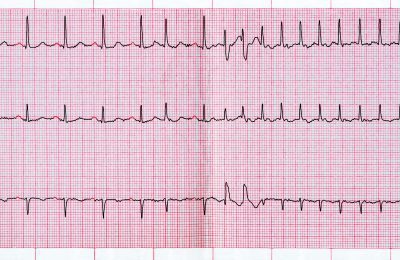
Washington, DC—Hyperkalemia resulting from kidney failure is associated with life-threatening arrhythmias. Joshua Powell, MD, and colleagues conducted a study to test the hypothesis that patients with chronic hyperkalemia from end-stage renal disease (ESRD) have fewer electrocardiography (ECG) changes and less arrhythmias than patients with acute hyperkalemia from acute kidney injury. Results of the study were reported in an oral presentation at Kidney Week 2019 in a presentation titled Electrocardiographic Manifestations of Acute vs Chronic Hyperkalemia.
The researchers reviewed 256 adult admissions from the Oakland University William Beaumont School of Medicine, Royal Oak, Michigan, with primary or secondary diagnoses of hyperkalemia in patients with chronic hyperkalemia from ESRD, and patients with acute hyperkalemia without ERSD. The study measured the overall incidence of ECG changes, and assessed differences between the two groups using unpaired T-tests, chi-square tests, and multivariate analysis logistic regression.
Changes in ECG due to hyperkalemia were seen in 32% of encounters. There was no difference in ECG change incidence between patients with chronic hyperkalemia and those with acute hyperkalemia. However, in univariate analysis, the risk of ECG changes was increased with increased patient age (69.9 vs 61.7 years; P=.0003), increased serum potassium (7.05 vs 6.8; P=.0424), and history of ischemic heart disease (P=.03). In multivariate analysis, there was an independent association between higher endogenous serum calcium levels and less T-wave peaking (odds ratio 0.68; P=.0235).
In conclusion, the researchers said, “This study demonstrated no difference in ECG changes between acute and chronic hyperkalemic groups, thus did not support the hypothesis that clinical arrhythmias are less prevalent with chronic hyperkalemia. As expected, increasing age, increasing potassium levels, and prior ischemic heart disease predisposed patients to ECG changes. Although pharmacologic calcium is known to protect against hyperkalemic arrhythmias, this study is unique in finding less T-wave peaking with higher endogenous serum calcium levels, implying that higher nonpharmacologic calcium serum levels may be protective against arrhythmias.”
Source: Powell J, Karabon PJ, Berman AD, Kellerman PS. Electrocardiographic manifestations of acute vs chronic hyperkalemia. Abstract of a presentation at the American Society of Nephrology Kidney Week 2019 (Abstract TH-OR068), November 7, 2019, Washington, DC.






 © 2025 Mashup Media, LLC, a Formedics Property. All Rights Reserved.
© 2025 Mashup Media, LLC, a Formedics Property. All Rights Reserved.